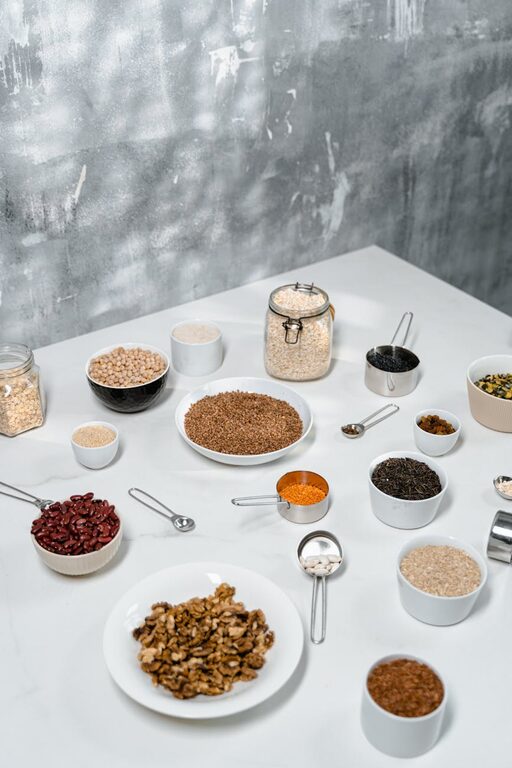When it comes to cooking at home, one of the biggest challenges can be meal planning—especially if your schedule is busy or your grocery trips are infrequent. The good news is that you don’t always need a long shopping list to prepare tasty, satisfying meals. By learning how to plan meals from pantry staples, you can simplify your cooking routine, save money, and reduce food waste. In this post, we’ll walk you through practical steps and ideas to get the most out of common pantry ingredients.
What Are Pantry Staples?
Pantry staples are the essential ingredients you keep on hand that have a long shelf life. These items form the foundation for a variety of meals and include things like:
– Grains: rice, pasta, quinoa, oats
– Canned Goods: beans, tomatoes, vegetables, coconut milk
– Baking Essentials: flour, sugar, baking powder, yeast
– Oils & Vinegars: olive oil, vegetable oil, apple cider vinegar
– Spices & Herbs: salt, pepper, garlic powder, dried basil, chili flakes
– Other basics: broth or stock (canned or powdered), nut butters, canned fish
Having these ingredients stocked means you have countless meal options at your fingertips without needing a last-minute trip to the store.
Step 1: Take Inventory of Your Pantry
Before planning any meals, spend a few minutes taking stock of what you have. Organize your pantry so you can clearly see and access your staples. This process helps you:
– Avoid buying duplicates
– Remember forgotten ingredients
– Get inspired by what’s available
Make a simple list or use a smartphone note app to jot down the main categories and specific items.
Step 2: Choose a Meal Theme or Protein Base
Once you know what’s available, think about what type of meals you want to prepare. It could be based on a cuisine you enjoy (Italian, Mexican, Asian), a cooking method (one-pot meals, casseroles, stir-fries), or a main protein source such as:
– Beans and lentils (great plant-based option)
– Canned tuna or salmon
– Eggs (if fresh items are included)
– Tofu or shelf-stable meat substitutes
Many pantry staples complement these proteins well.
Step 3: Build Meals Around Staples
Here are some examples of meals you can plan using pantry staples:
1. One-Pot Pasta with Canned Tomatoes and Beans
– Pasta (any kind)
– Canned diced tomatoes
– Canned beans (like cannellini or kidney beans)
– Olive oil, garlic powder, dried basil
– Optional: add parmesan or fresh herbs if available
Cook pasta directly in a pan with tomatoes and beans to create a hearty, quick dinner.
2. Rice and Bean Bowls
– Rice or quinoa
– Canned black beans, corn (optional)
– Spices like cumin, chili powder
– Lime juice or vinegar for brightness
– Olive oil and garlic
Add canned salsa or hot sauce for extra flavor.
3. Lentil Stew or Curry
– Dried or canned lentils
– Canned coconut milk or broth
– Canned tomatoes or vegetables
– Curry powder or garam masala
– Onions and garlic powder
Simmer until thick and serve with rice or bread.
4. Chickpea Salad or Sandwiches
– Canned chickpeas
– Mayonnaise or yogurt (if available)
– Mustard, lemon juice, salt, pepper
– Chopped onion or celery (fresh or jarred)
Mash the chickpeas and mix with other ingredients for a quick salad.
5. Oatmeal or Pancakes for Breakfast
– Oats
– Flour, baking powder
– Sugar or honey
– Milk or water
– Optional add-ins: canned fruit, nuts, cinnamon
Prepare warm, comforting breakfasts with what you have.
Step 4: Use Spices and Condiments to Elevate Flavors
Spices and condiments can make a big difference in making pantry-based meals exciting and delicious. Don’t hesitate to experiment with different spice blends or add a splash of vinegar, soy sauce, or hot sauce. Simple tweaks can transform a basic dish into something special.
Step 5: Plan Your Grocery List to Fill Gaps
After assessing your pantry and possible meals, create a shopping list focused on fresh or perishable items that will complement your staples. Planning this way means you buy only what is necessary, reducing food waste and saving money.
For example, if you have rice and beans, adding fresh vegetables or a salad on the side can complete the meal. This thoughtful approach helps balance nutrition and variety even on a pantry-based cooking routine.
Tips for Maintaining a Well-Stocked Pantry
– Rotate stock: Use older items first to prevent spoilage.
– Keep versatile basics: Stock staples that work in multiple cuisines.
– Organize for visibility: Use clear containers or labels.
– Check expiration dates regularly.
Wrapping Up
Meal planning from pantry staples is a smart, stress-free way to cook at home. It encourages creativity, resourcefulness, and efficiency in the kitchen. With a well-organized pantry and a little planning, you can whip up delicious meals any day without last-minute store runs. Start today by taking inventory and trying one of the meal ideas above—your future self will thank you!
Happy cooking!

